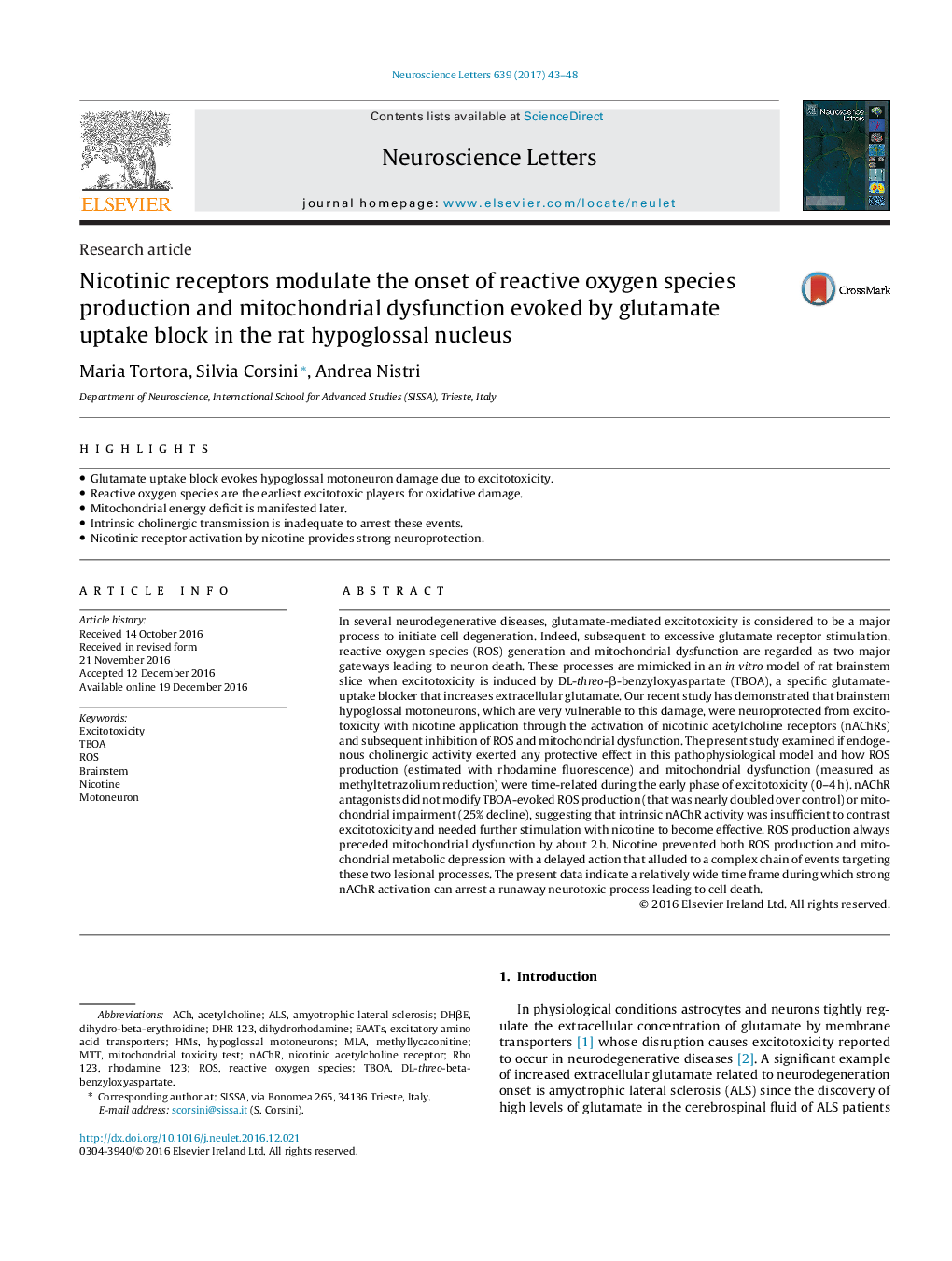| کد مقاله | کد نشریه | سال انتشار | مقاله انگلیسی | نسخه تمام متن |
|---|---|---|---|---|
| 5738558 | 1615060 | 2017 | 6 صفحه PDF | دانلود رایگان |
- Glutamate uptake block evokes hypoglossal motoneuron damage due to excitotoxicity.
- Reactive oxygen species are the earliest excitotoxic players for oxidative damage.
- Mitochondrial energy deficit is manifested later.
- Intrinsic cholinergic transmission is inadequate to arrest these events.
- Nicotinic receptor activation by nicotine provides strong neuroprotection.
In several neurodegenerative diseases, glutamate-mediated excitotoxicity is considered to be a major process to initiate cell degeneration. Indeed, subsequent to excessive glutamate receptor stimulation, reactive oxygen species (ROS) generation and mitochondrial dysfunction are regarded as two major gateways leading to neuron death. These processes are mimicked in an in vitro model of rat brainstem slice when excitotoxicity is induced by DL-threo-β-benzyloxyaspartate (TBOA), a specific glutamate-uptake blocker that increases extracellular glutamate. Our recent study has demonstrated that brainstem hypoglossal motoneurons, which are very vulnerable to this damage, were neuroprotected from excitotoxicity with nicotine application through the activation of nicotinic acetylcholine receptors (nAChRs) and subsequent inhibition of ROS and mitochondrial dysfunction. The present study examined if endogenous cholinergic activity exerted any protective effect in this pathophysiological model and how ROS production (estimated with rhodamine fluorescence) and mitochondrial dysfunction (measured as methyltetrazolium reduction) were time-related during the early phase of excitotoxicity (0-4 h). nAChR antagonists did not modify TBOA-evoked ROS production (that was nearly doubled over control) or mitochondrial impairment (25% decline), suggesting that intrinsic nAChR activity was insufficient to contrast excitotoxicity and needed further stimulation with nicotine to become effective. ROS production always preceded mitochondrial dysfunction by about 2 h. Nicotine prevented both ROS production and mitochondrial metabolic depression with a delayed action that alluded to a complex chain of events targeting these two lesional processes. The present data indicate a relatively wide time frame during which strong nAChR activation can arrest a runaway neurotoxic process leading to cell death.
Journal: Neuroscience Letters - Volume 639, 3 February 2017, Pages 43-48
